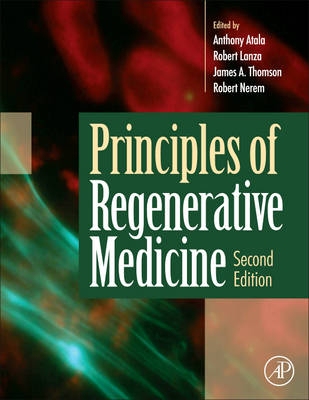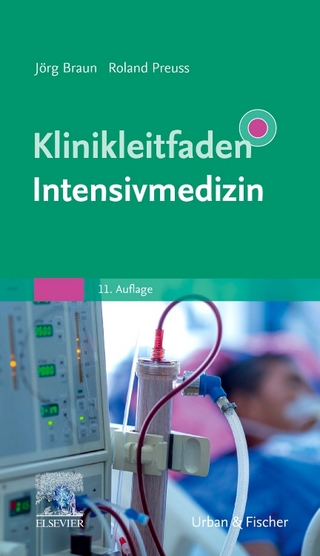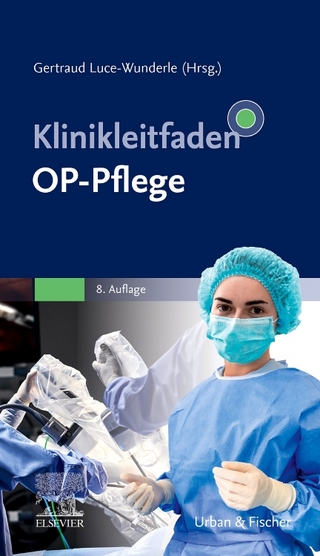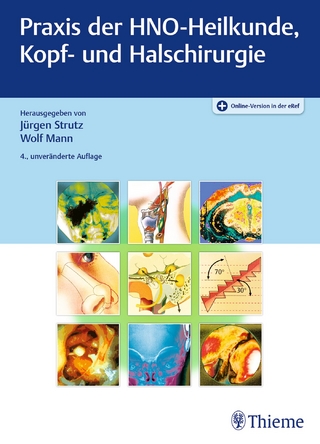
Principles of Regenerative Medicine
Academic Press Inc (Verlag)
978-0-12-381422-7 (ISBN)
- Titel erscheint in neuer Auflage
- Artikel merken
Virtually any disease that results from malfunctioning, damaged, or failing tissues may be potentially cured through regenerative medicine therapies, by either regenerating the damaged tissues in vivo, or by growing the tissues and organs in vitro and implanting them into the patient. Principles of Regenerative Medicine discusses the latest advances in technology and medicine for replacing tissues and organs damaged by disease and of developing therapies for previously untreatable conditions, such as diabetes, heart disease, liver disease, and renal failure.
Anthony Atala, M.D., is the Director of the Wake Forest Institute for Regenerative Medicine, and the W.H. Boyce Professor and Chair of the Department of Urology at Wake Forest University. Dr. Atala is a practicing surgeon and a researcher in the area of regenerative medicine. His current work focuses on growing new human cells, tissues and organs. Dr. Atala works with several journals and serves in various roles, including Editor-in-Chief of Current Stem Cell Research and Therapy, and Therapeutic Advances in Urology; as Associate Editor of the Journal of Tissue Engineering and Regenerative Medicine, The Journal of Rejuvenation Research, Nanotechnology in Engineering and Medicine, Gene Therapy and Regulation, and Current Reviews in Urology; as Executive Board Member or Section Editor of the journal Tissue Engineering and International Journal of Artificial Organs, and as Editorial Board member of the International Journal of Stem Cells, Stem Cell Review Letters, Expert Opinion on Biological Therapy, Biomedical Materials, Recent Patents on Regenerative Medicine, the Journal of the American College of Surgeons, the Journal of Urology, BMC Urology, Urology, and Current Opinion in Urology. Dr. Atala is a recipient of the US Congress funded Christopher Columbus Foundation Award, bestowed on a living American who is currently working on a discovery that will significantly affect society, and the Gold Cystoscope Award for advances in his field. Dr. Atala was named by Scientific American as a Medical Treatments Leader of the Year for his contributions to the fields of cell, tissue and organ regeneration. In 2006, he was named by Fast Company magazine as one of 50 people who “will change how we work and live over the next 10 years. Dr. Atala’s work was listed as Discover Magazine`s Number 1 Top Science Story of the Year in the field of medicine, and as Time Magazine’s top 10 medical breakthroughs of the year in 2007. A Time Magazine poll ranked Dr. Atala as the 56th most influential person of the year in 2007. Esquire Magazine in 2008 named Dr. Atala one of the 75 most influential persons of the 21st century. Fast Company Magazine named Dr. Atala one of 100 Most Creative People in Business in 2009. Dr. Atala was featured in U.S. News & World Report as one of “14 Medical Pioneers Who Aren’t Holding Back. Dr. Atala has led or served several national professional and government committees, including the National Institutes of Health working group on Cells and Developmental Biology, and the National Institutes of Health Bioengineering Consortium. He is currently an NIH “Quantum Grant awardee. Dr. Atala heads a team of over 250 physicians and researchers. Ten applications of technologies developed in Dr. Atala's laboratory have been used clinically. He is the editor of nine books, including Minimally Invasive Urology, Methods of Tissue Engineering, Principles of Regenerative Medicine, and Foundations of Regenerative Medicine, and has published more than 300 journal articles and has applied for or received over 200 national and international patents. Robert Lanza is an American scientist and author whose research spans the range of natural science, from biology to theoretical physics. TIME magazine recognized him as one of the “100 Most Influential People in the World, and Prospect magazine named him one of the Top 50 “World Thinkers. He has hundreds of scientific publications and over 30 books, including definitive references in the fields of stem cells, tissue engineering, and regenerative medicine. He’s a former Fulbright Scholar and studied with polio-pioneer Jonas Salk and Nobel laureates Gerald Edelman (known for his work on the biological basis of consciousness) and Rodney Porter. He also worked closely (and co-authored papers in Science on self-awareness and symbolic communication) with noted Harvard psychologist BF Skinner. Dr. Lanza was part of the team that cloned the world’s first human embryo, the first endangered species, and published the first-ever reports of pluripotent stem cell use in humans.
1 Molecular Organization of Cells 2 Cell-ECM interactions In Repair and Regeneration 3 Developmental Mechanisms of Regeneration 4 The molecular basis of pluripotency in Principles of Regenerative Medicine 5 How cells change their phenotype 6 Scarless Wound Healing 7 Somatic Cloning and Epigenetic Reprogramming in Mammals 8 Engineered Proteins for Manipulating Gene Expression and Genome Sequence 9 Genetic Approaches in Human Embryonic Stem Cells and Their Derivatives 10 Embryonic Stem Cells: Derivation and Properties 11 Alternate Sources of human embryonic stem cells 12 Stem cells derived from amniotic fluid and placenta 13 Induced Pluripotent stem cells 14 Mesenchymal Stem cells Derived from Bone Marrow 15 Multipotent adult progenitor cells 16 Mesenchymal Stem cells 17 Hepatic Stem Cells and Therapy 18 Cardiac stem cells 19 Skeletal muscle stem cells 20 Stem Cells Derived from Fat 21 Stem Cells Derived from Peripheral Blood 22 Islet Cell Therapy and Pancreatic Stem Cells 23 Regenerative Medicine for Diseases of the Retina 24 Somatic cells: Growth and expansion potential of T Lymphocytes 25 Mechanical Determinants of Tissue Development 26 Morphogenesis and Morphogenic Proteins 27 Physical stress as a factor in tissue growth and remodeling 28 Intelligent Surfaces for Cell Sheet Engineering 29 Applications of Nanotechnology in Regenerative Medicine 30 Design Principles in Biomaterials and Scaffolds 31 Natural Origin Materials- Processing, Modification and Performance 32 Synthetic Polymers 33 Collagen Based Scaffold Materials 34 Hydrogels 35 Surface Modification of Biomaterials 36 Histogenesis in Three-Dimensional Scaffolds 37 Biocompatibility and Bioresponse to biomaterials 38 Mechano-inducible systems for stem cells 39 Biomineralization and Bone Regeneration 40 Cell therapy for blood substitutes 41 Articular Cartilage 42 Implantation of Myogenic Cells in Skeletal Muscles 43 Clinical islet transplantation 44 Fetal Tissues 45 Engineering of Large Diameter Vessels 46 Engineering of Small Diameter Vessels 47 Cardiac Tissue 48 Regenerative Medicine in the Cornea 49 Alimentary Tract 50 Extracorporeal Kidney Support 51 Tissue Engineering of the Reproductive System 52 Cartilage Tissue Engineering 53 Functional Tissue Engineering of Ligament and Tendon Injuries 54 Central Nervous System 55 Peripheral Nervous System
56 Tissue Engineeing of Skin 57 Tissue Engineering of the Respiratory Tree 58 Ethical Considerations 59 US Stem Cell Research Policy 60 Overview of FDA Regulatory Process
| Erscheint lt. Verlag | 16.12.2010 |
|---|---|
| Verlagsort | San Diego |
| Sprache | englisch |
| Maße | 216 x 276 mm |
| Gewicht | 2650 g |
| Themenwelt | Medizin / Pharmazie ► Medizinische Fachgebiete ► Chirurgie |
| Naturwissenschaften ► Biologie ► Biochemie | |
| Naturwissenschaften ► Biologie ► Genetik / Molekularbiologie | |
| ISBN-10 | 0-12-381422-7 / 0123814227 |
| ISBN-13 | 978-0-12-381422-7 / 9780123814227 |
| Zustand | Neuware |
| Informationen gemäß Produktsicherheitsverordnung (GPSR) | |
| Haben Sie eine Frage zum Produkt? |
aus dem Bereich



